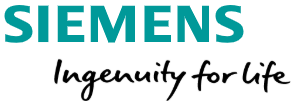服务热线:13360076532
邮箱:sales@yaentek.cn
YAEN Electronics Technology Co., LTD.
Autodesk|Altium|Cadence|Downstream|Graphicode|Keil|Wise|SiemensEDA正版软件授权代理分销商
- 暂无相关记录!
Benefits
•Supports Siemens PDKs and iPDKs
•Supports interoperability with 3rd-party IP
•Complete, hierarchical physical layout editor
•Standard interface to Calibre physical verification tools
•Supports curved polygons and all-angle geometries
•Fast rendering
•Object snapping (gravity) for quick, accurate layout
•Platform independence with Windows and Linux support
•Ease of use: intuitive and quick learning curve
Photonic-specific benefits
•Supports production-level photonic design
•Layout-centric flow with built-in netlisting
•Waveguide generation and editing:
–Waveguide length editing
–Multiple waveguide types
–Waveguide crossing insertion
•PDKs available from multiple photonic foundries
•Supports multiple photonics simulators




Benefits
•Supports Siemens PDKs and iPDKs
•Supports interoperability with 3rd-party IP
•Complete, hierarchical physical layout editor
•Standard interface to Calibre physical verification tools
•Supports curved polygons and all-angle geometries
•Fast rendering
•Object snapping (gravity) for quick, accurate layout
•Platform independence with Windows and Linux support
•Ease of use: intuitive and quick learning curve

Tanner L-Edit Photonics is a comprehensive photonics physical design environment. It is based on the layout editor widely-used for both IC and MEMS design.
Photonic-specific benefits
•Supports production-level photonic design
•Layout-centric flow with built-in netlisting
•Waveguide generation and editing:
–Waveguide length editing
–Multiple waveguide types
–Waveguide crossing insertion
•PDKs available from multiple photonic foundries
•Supports multiple photonics simulators
Layout-centric design flow
Tanner™ L-Edit Photonics software provides significant productivity improvement with a layout-centric design flow. Meaning, designers can do all of their work directly in the layout editor. When the design is at a point that simulation needs to be run, a netlist can be created directly from L-Edit Photonics.
This layout-centric design flow removes the need to create a schematic, saving significant time in the design process, as the layout is the golden design database. The resulting netlist supports all of Siemens photonic simulation partners. The netlist also supports Siemens transistor level and mixed mode simulators if the design contains both electrical and optical components.
Schematic-driven photonics design flow
For designers that would like to use a traditional custom IC design flow, Tanner S-Edit can be used to create the schematic. For larger designs, a schematic-driven layout flow is available within Tanner L-Edit IC, which contains all of the same photonics layout capability as L-Edit Photonics.
Photonic design creation
Creating a photonic layout is simple with L-Edit Photonics. First, the designer places the photonic components. Then, the waveguides are created to connect those components. Multiple waveguide types are supported: striped, ribbed and multi-segmented. In addition, the waveguide can be edited to create an exact length.
Electric components can also be placed manually and interconnected as needed to connect to heaters in the photonic PCells and to the outside electrical world.
Integrations to Calibre
L-Edit Photonics launches Calibre® Interactive software to drive the physical verification. Calibre tools that designers can launch directly are:
•Calibre nmDRC software for design rule checking
•Calibre nmLVS software for layout versus schematic checking
•Calibre xACT™ software for parasitic extraction
•Calibre LFD software for litho-friendly design to find lithographic hotspots
•Calibre RVE software to view the results and highlight nets and devices with cross probing to L-Edit Photonics
Interoperable with other EDA flows
L-Edit Photonics is built on OpenAccess, so design data can be interchanged with any other layout tool that supports OpenAccess.


Creating a waveguide in L-Edit Photonics is a two step process. First, create an orthogonal route that connects the two components. Then, by pressing a hot key, that route can be converted into a waveguide with the appropriate curvatures, based on the process.
Foundry support
L-Edit Photonics supports Siemens formatted PDKs and the industry-standard, interoperable iPDK. PDKs are available from multiple photonic foundries.
Designers can also create their own components or create their own PDK.
Requirements
L-Edit Photonics is supported on both Windows® and Linux™.

工业软件国产替代方案
Sailwind
塔格特Target2000
浩辰Gstar CAD
浩辰Gstar 3D
ZWSOFT中望CAD
ZWSOFT中望3D
天河THCAD
Foxit福昕PDF
望友DFx | CAM365

进口正版工业软件
Altium Designer
Valor Process Preparation
Teamcenter Rapid Start
AutoCAD | Inventer
地点:深圳市龙岗区城投商务中心316
联系电话:133 6007 6532
邮箱:sales@yaentek.cn
应用领域
手机通讯
网络机顶盒
汽车电子
新能源
国防军工
工业控制
消费电子

















